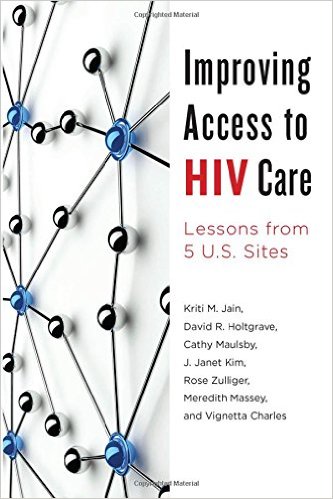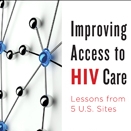"You stabilize the clients, you stabilize their HIV"--Boosting Engagement Across the HIV Care Continuum
By Cathy Maulsby, PhD, MPH & Kriti M. Jain, MSPH | February 1, 2016
Assistant Scientist & Doctoral Student, Johns Hopkins Bloomberg School of Public Health
We’ve traveled a great distance in the fight against HIV since it first appeared in the 1980s. After decades of activism, research, and the development of effective medications, HIV is a manageable chronic disease for many. In fact, in the U.S., the average life expectancy for people living with HIV (PLWH) is inching towards that of all Americans. However, we still have much further to go to end HIV.
Today, around 1.2 million people in the U.S. are living with HIV, and certain populations (such as gay, bisexual and other men who have sex with men, Black women and men, Latino men and women, people who inject drugs, youth aged 13 to 24, and transgender women) are disproportionately affected by the disease. Out of the 1.2 million PLWH in the country, too many lack access to ART—the lifesaving medications that reduce HIV transmission by lowering the level of virus in the blood (viral suppression).
 ETR's Chief Science Officer, Vignetta Charles, PhD, was a contributing author to the new publication Improving Access to HIV Care: Lessons from Five U.S. Sites. Cathy Maulsby and Kriti M. Jain, who penned this post, are also authors. Find more information about the book here.
ETR's Chief Science Officer, Vignetta Charles, PhD, was a contributing author to the new publication Improving Access to HIV Care: Lessons from Five U.S. Sites. Cathy Maulsby and Kriti M. Jain, who penned this post, are also authors. Find more information about the book here.Filling the Gaps in HIV Care
In the field of HIV, we measure our progress against the HIV care continuum. It’s a model of the stages of HIV medical care, starting from initial diagnosis and ending with viral suppression. It allows program managers and researchers to identify where gaps are and make corresponding improvements to services for engagement in care and health outcomes for PLWH.
The Centers for Disease Control and Prevention (CDC) estimates that among U.S. PLWH, only 41% are retained in HIV care, 36% are prescribed ART, and 28% are virally suppressed. This means that the majority of PLWH lack access to regular HIV medical appointments (approximately 60%), and even more (approximately 70%) are not virally suppressed. Clearly, there is significant work to be done to reduce these gaps across the continuum of care.
What Works to Manage HIV
In July 2015, the White House released an updated National HIV/AIDS Strategy (NHAS) to guide the nation’s response to the epidemic through 2020. The new NHAS sets specific goals to achieve the vision of a country where new HIV infections are rare, and every person living with HIV has access to high-quality care. To meet these goals, HIV programs have to combine behavioral and biomedical approaches to boost linkage and retention in HIV care.
What we already know works—like patient navigation, coordinated care teams, and strengths-based case management. These interventions are saving lives because they provide the tools and support to maintain engagement in regular HIV care. The problem is that, for the most part, these services are not covered by or reimbursable by insurance.
Also, there is a dearth of scientific evidence on how to implement these interventions in real-life practice settings. In addition, despite the fact that Black gay, bisexual, and other men who have sex with men are most affected by HIV, there are few evidence-based interventions specifically for these groups.
In our research, we found that a lack of support services—such as long waitlists for housing and insufficient resources for mental health and addiction services, and employment-related services—created a significant barrier to HIV program implementation. And while case management reimbursement through the federal Ryan White HIV/AIDS program provides much needed support, the demand for these services often far surpasses the available resources. We described this in detail in a book called Improving Access to HIV Care: Lessons from Five U.S. Sites.
“You stabilize the clients, you stabilize their HIV”
Scientific advances have given us the tools to prevent HIV infection and disease progression. But HIV is a social disease, and the root causes—and the largest barriers to HIV medical care and HIV medication adherence for many PLWH—are the complex and competing needs, such as housing insecurity, addiction, mental health conditions, incarceration and unemployment.
To realize the full benefit of the tools available to fight HIV, coverage for much needed case management and social support services must be expanded, and we must address, at the systems-level, the social factors that place individuals at increased risk for HIV transmission. Otherwise, the disparities we see today across the HIV continuum of care are likely to persist.
Cathy Maulsby is an Assistant Scientist (cmaulsb1@jhu.edu) and Kriti M. Jain (kjain3@jhu.edu) is a current doctoral student. Both are based at the Johns Hopkins Bloomberg School of Public Health and are co-authors of Improving Access to HIV Care: Lessons from Five U.S. Sites published by JHU Press. This work was led and supported by AIDS United.





